Leica Super Elmar-M 18mm f3.8 ASPH Lens Review:
If you’re looking for an M mount ultra wide angle lens, there are plenty to choose from these days. Some of the big name manufacturers for M mount lenses, like Zeiss and Voigtlander, make tons of choices. There are also smaller manufacturers that do as well. Of course, if you’re looking for something from Leica, you’re in luck because they also make quite a few to choose from now. You have the ultra fast Summilux lenses to even a lens called the Tri-Elmar, which is a rangefinder lens that can change focal lengths. Then there are the more compact lenses like the Super Elmar-M 18mm f3.8 ASPH, which is what I’ll be talking about here. This particular copy was not loaned to me for review purposes but my very own. For several years now, it’s been one of my favorite lenses to use. Let’s take a closer look.
Leica Super Elmar-M 18mm f3.8 ASPH Lens Build Quality:
Let’s start off with the build quality, which like pretty much every other M lens, is quite exceptional. The lens feels very solid thanks in part to its all metal design (black anodized aluminum). It’s assembled extremely well. I’ve had my copy for years. I don’t remember exactly when I bought it but I had my M 240 at the time. At one point, the Super Elmar-M 18mm f3.8 ASPH was my daily user, and to this day, it feels every bit as good as it did when it was new. The tolerances are just as tight, for example. The list price of this lens is $3,595 (currently discounted to $3,495), which isn’t cheap but it is definitely built to the standards of what you would expect from an 18mm f3.8 lens costing this much, and one that is made by Leica.
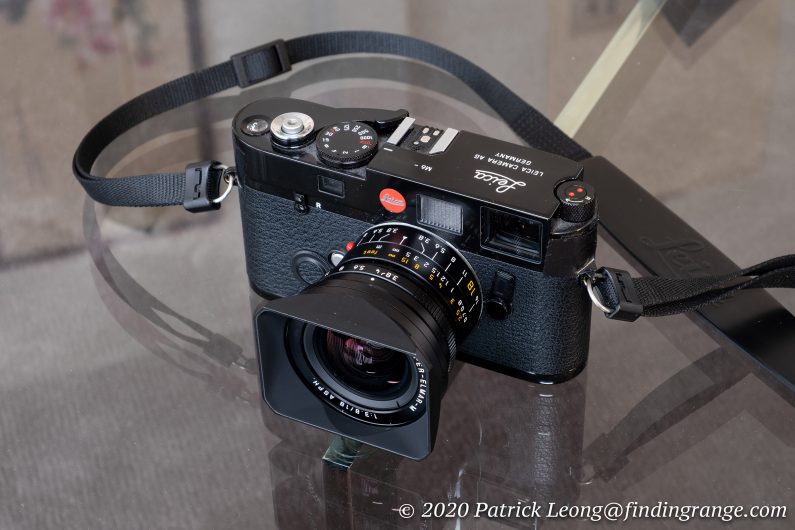
↑ Here’s the Leica M6 TTL Millennium with the Super Elmar-M 18mm f3.8 ASPH attached.
In addition to the superb build, the feel of this lens makes it truly a joy to use. The focus ring, for example, is buttery smooth and velvety with just the right amount of resistance to give you feel as you rotate it. The aperture ring clicks solidly in half stops. Like every other M lenses I’ve used, the Super Elmar-M 18mm has such a nice, mechanical feel to it; it’s something that, in my opinion, not only adds to the high end feel, and quality but is something that really is missing quite a bit in photography gear these days.
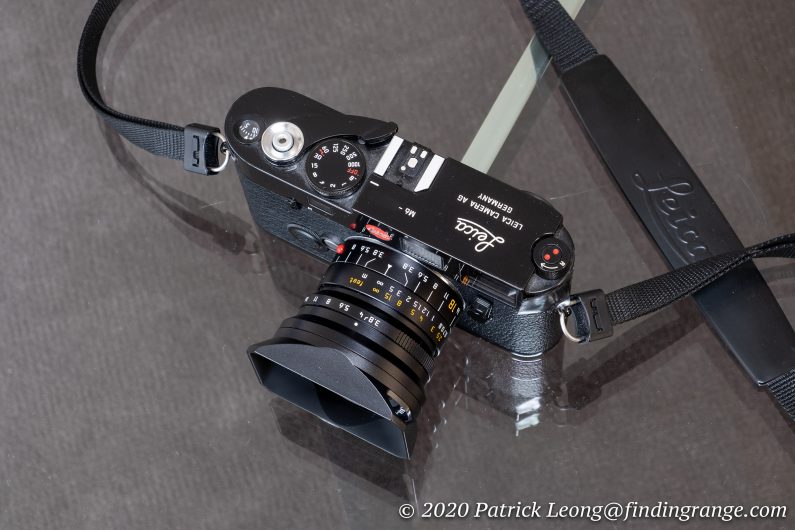
↑ Here’s a top view of the lens attached to the M6.
Furthermore, Super Elmar-M 18mm f3.8 ASPH is a very easy lens to live with on a daily basis. While it has a modest maximum aperture, it definitely makes up for it in terms of size and weight. As you can see, the 18mm Super Elmar is quite compact. At 310 g, it’s a bit of a light weight but at the same time, it still has enough heft for its size that it feels like a high end product, and also helps a bit with holding a camera steady. The size and weight of the 18m Super Elmar makes this lens something that is quite frankly, easy to carry around all day. This is part of the reason why the Super Elmar 18mm was my daily lens at one point. It’s great for street photography; it definitely gives you a different, and arguably more unique perspective than say a 35mm. At the same time, this lens is small enough to be unobtrusive and discreet as well. With an 18mm, you might have to shoot a closer at times but the lens is small enough that not many will notice you shooting or if they do, they just won’t care.
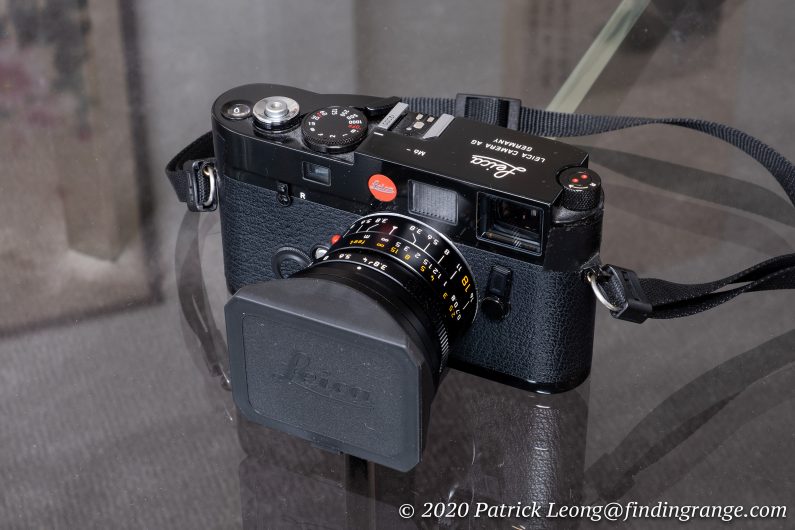
↑ The lens cap slides right over the lens hood.
The overall size and weight of this lens has been great not only on M bodies that I’ve used but also the SL I owned, Fuji X Series bodies, and even a Sigma fp. This lens just balances beautifully on a camera body. It’s never front heavy, for example. It’s really just about perfect for a lens of this focal length.
As for a lens hood, there’s a metal one that is included with the Super Elmar-M 18mm f3.8 ASPH. It’s a screw on type, which I love because it stays tightly on the lens. It will never come off accidentally. It’s designed to stay in place because if you look at the lens from the side, the front element does protrude out. So, in addition to the lens hood blocking out some flare, it’s also designed to physically protect your lens’ front element.
However, if you choose to use a filter with the Super Elmar 18mm, you can’t just screw one on because of the protruding from element. There’s also no thread for one. You will need to purchase the Leica Filter Holder for it, which basically replaces the lens hood. It screws on just like the lens hood, and adds $149 to your lens. It also uses filters with a 77mm filter thread, which I admit isn’t small but it’s to help prevent vignetting.
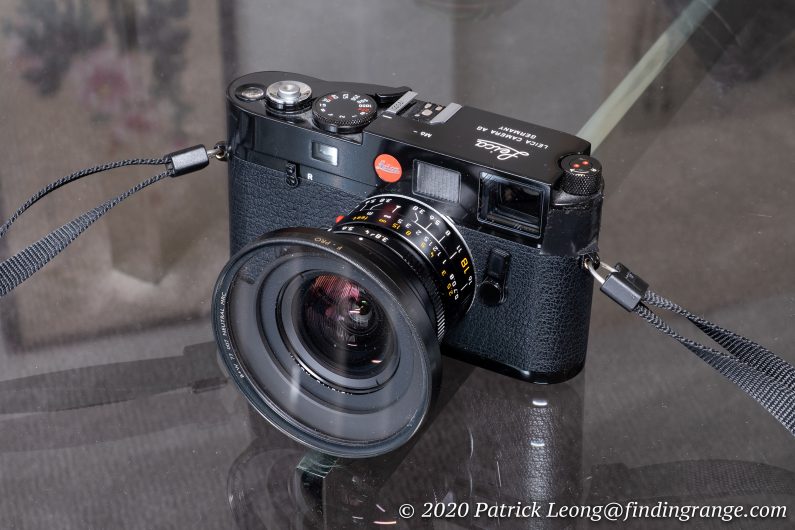
↑ This is the Filter Holder for the Super Elmar-M 18mm f3.8 ASPH.
I bought the filter holder when I bought the lens, and it’s what I permanently use on the the 18mm. It’s definitely high quality; it’s made of metal, and fits perfectly on the 18mm Super Elmar. When it’s attached, you still get that same solid feel you would get from when the lens hood is attached to the lens. However, I do take issue with the design mainly with the two vents on the top of the filter holder.
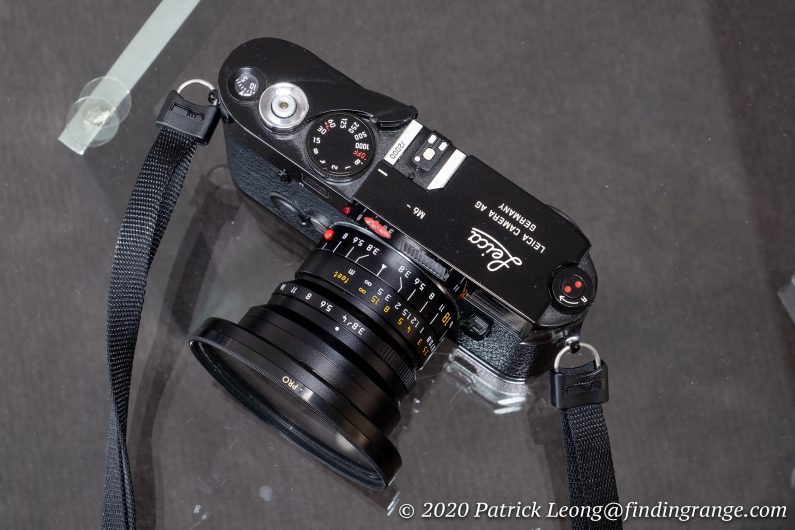
↑ Top view of the lens with the filter holder attached.
What I discovered is that sometimes, light behind you goes through the vents, and reflects off the filter that you have attached causing weird reflections in the upper corners of your image. If there are any reflections, they are small, and only take a couple of seconds to fix in Photoshop. Sometimes, I don’t even notice them. At times, this does happen at night as well. At night the light can come from street lamps, for example. You could probably tape the vents, if you wanted but it’s not such a huge issue for me, so when it does come up, I just fix it in Photoshop.
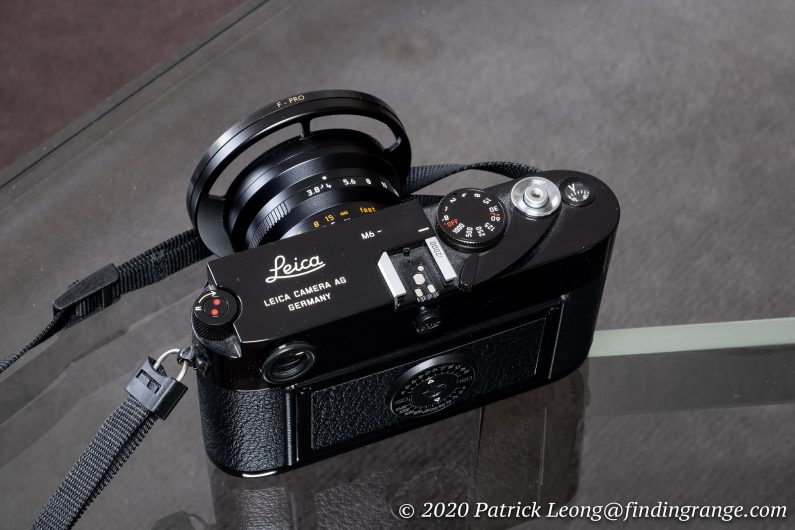
↑ The back of the Filter Holder with the vents.
Leica Super Elmar-M 18mm f3.8 ASPH Image Quality:
As for image quality, one of the reasons the Super Elmar-M 18mm f3.8 ASPH was my most used lens at one point is because I just love what comes out of it. The image quality is truly exceptional. For one, this lens is extremely sharp. Center sharpness is excellent even at wide open aperture, and as you stop down, the corners sharpen up a bit. Center sharpness increases just a tad too around f5.6 as well but it’s already so sharp in the center that it is difficult to even see much of a difference. Overall, you should have no issues using this lens throughout its entire aperture range. The Super Elmar-M 18mm picks up every little detail, and I just love how crisp the images look. It’s up there with the best of the 18mm’s, if you ask me.
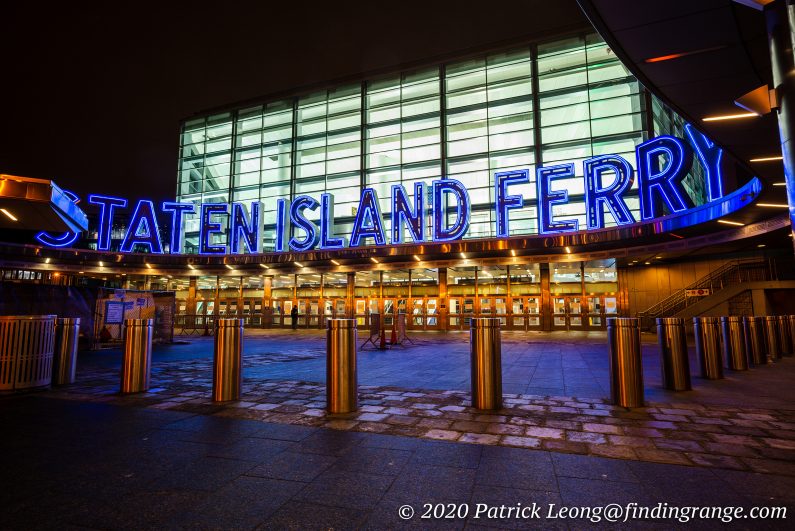
↑ This was taken with the Leica M Typ 240. I used 200 ISO here.
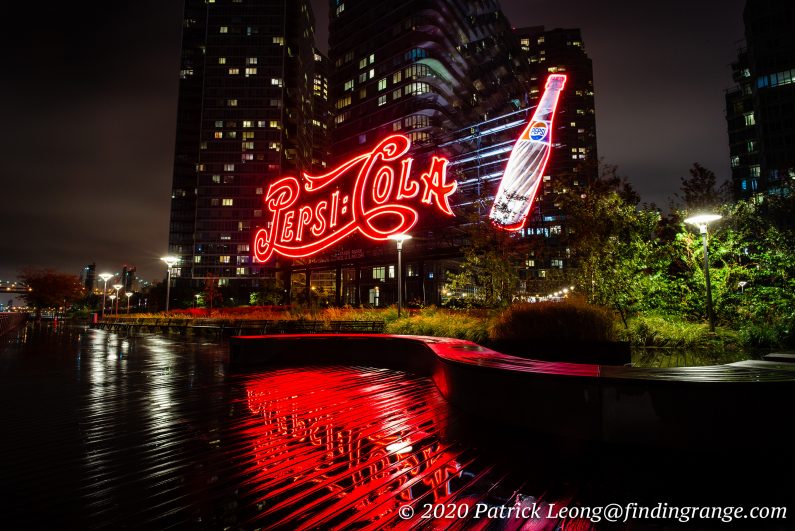
↑ This was taken with the M 240 as well. I used 200 ISO.
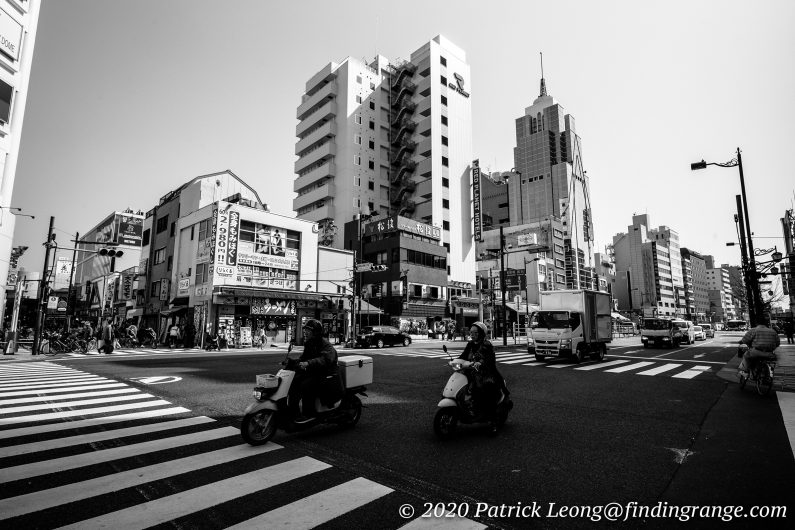
↑ This was taken with the Leica M10 on my trip to Japan. I used 800 ISO.
There are, of course, other excellent traits that this lens exhibits. For instance, subjects have that three dimensional pop we’re all looking for from a decent lens. You can definitely see it the images. Most here were shot with the lens stopped down, and they still have that depth to them. To me, the Super Elmar-M 18mm f3.8 ASPH has a bit of personality or maybe the better word is character. Color and contrast rendition are also excellent along with vignette control. There is some vignetting but it’s not something out of the ordinary for an 18mm lens, and it’s definitely nothing to worry about, especially in practice. Distortion is also a non-issue, and after all the years I’ve used this lens, I can’t remember it flaring once under normal use. The lens’ optics are truly stellar, and it’s just so easy to get decent photos out of it. It doesn’t matter what you’re shooting. It can be street, landscape, night shots or whatever you want to throw at it. At the end of the day, this lens won’t let you down.

↑ This was taken in Penn Station at night with the M 240. I used 3200 ISO here.
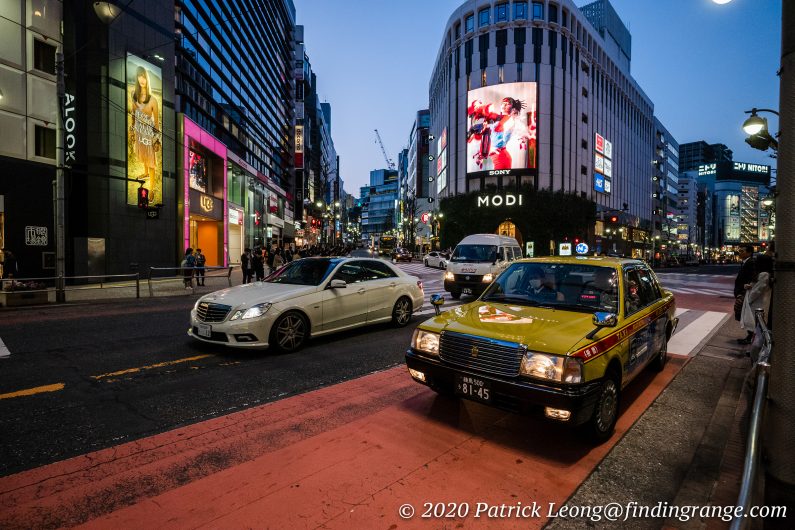
↑ Here’s one in Shibuya in Japan. This was taken with the Super Elmar-M 18mm, and M10 set at 3200 ISO.
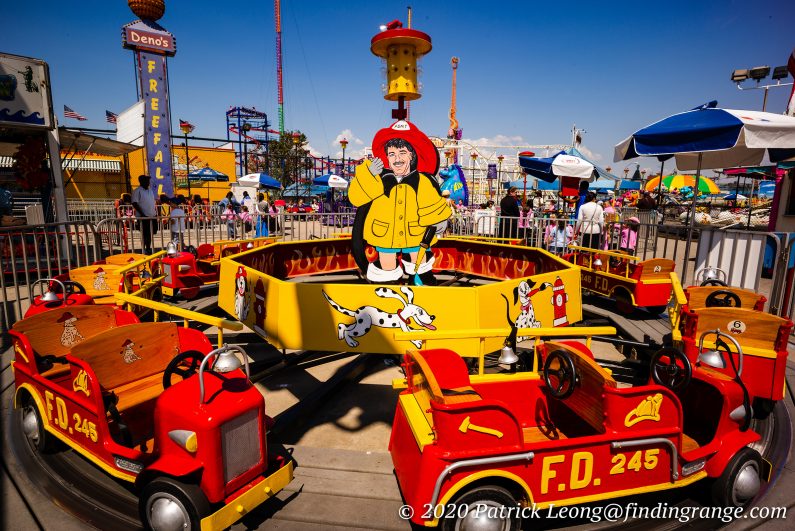
↑ This was taken in Coney Island with the Leica M 240. This was taken at 200 ISO.
In terms of the lens’ maximum aperture, f3.8 isn’t exactly fast. While I love fast lenses, I don’t think I would have it any other way, at least with this lens. I’ll admit that when I was first thinking about purchasing it, I was concerned that f3.8 was just too slow. In fact, it would be my slowest Leica lens by far. But the more I thought about it, the more I realized like some of you, I stop down when I shoot wide angles anyway. I don’t use a wide angle at all for bokeh shots, for example. A wide angle for me would be used for street, cityscape, vacation, and landscape photos. Often times, I may even bring a tripod for some of my shots. The night shots in this review were taken with a tripod, for example. For these types of subjects and activities, I’d much rather have a design that is more compact and light. I want something that I can carry around on vacation, for example, and not feel exhausted at the end of the day. For something like vacations, I don’t want to be thinking about my equipment. I imagine like most of you, I just want good pictures. I also want to be more discreet when I’m out street shooting. For this type of lens, a larger maximum aperture just wouldn’t benefit me much. All it would do is add more weight to my bag, and end up costing more.
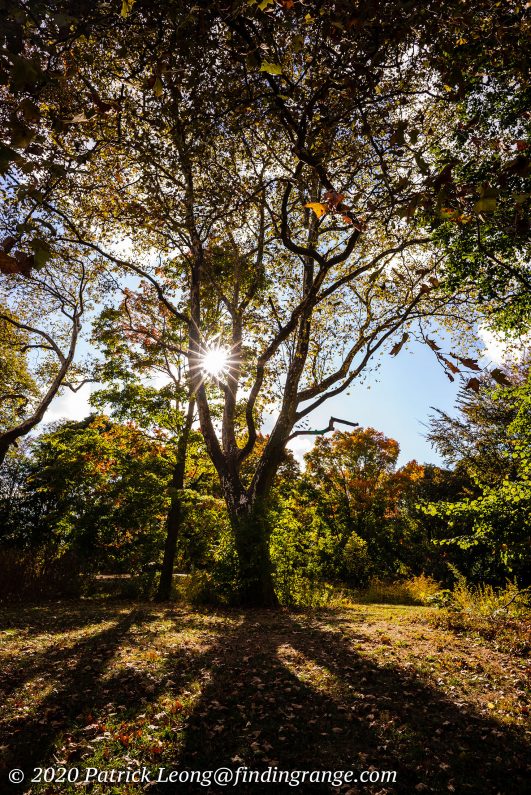
↑ Here’s another shot with the Super Elmar-M 18mm f3.8 ASPH and the M 240. The location was in Prospect Park. This was taken at 200 ISO.
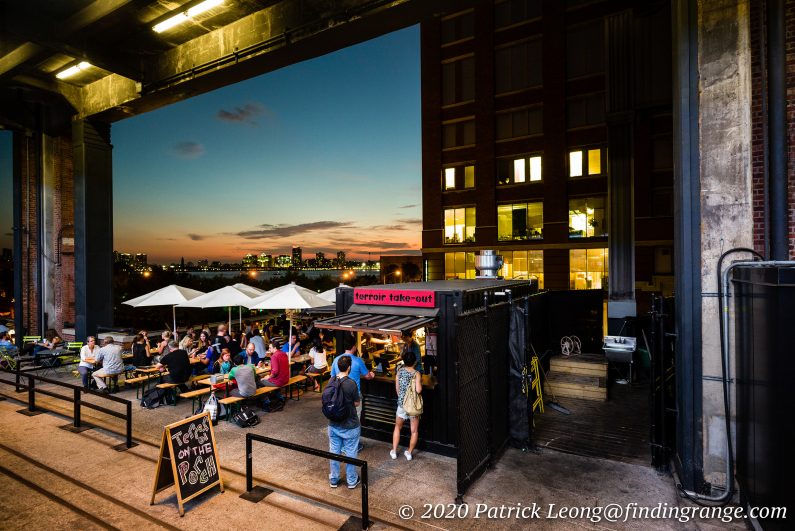
↑ This was taken on the High Line in Chelsea with the M 240 with 3200 ISO.
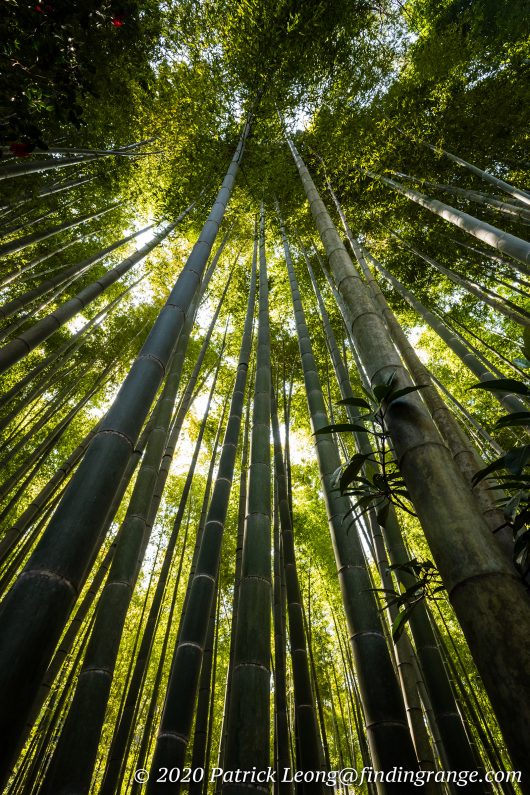
↑ Here’s one taken with the Leica M10 in Japan. I used 1600 ISO.
Now, we all have different needs, and I’m definitely not saying that a lens with such a modest aperture is for everyone. Some may do a lot of work in dimly lit situations, for example, which in that case, the Summilux-M 21mm f1.4 ASPH is probably the best bet (that’s an incredible lens by the way. See my review here). All I’m saying is I think for a wide angle, it’s not out of the ordinary to have a lens with such a modest maximum aperture. I definitely love my fast lenses but in the case of a wide angle, I just don’t need it. As I said earlier in this review, I’ve owned the 18mm for many years, and it’s smaller maximum aperture didn’t stop this from being one of my favorite and most used lenses. As you can see in the photos, I’ve used it everywhere.

↑ This was taken with the M 240 with 200 ISO in Queens. This is Hell Gate Bridge.
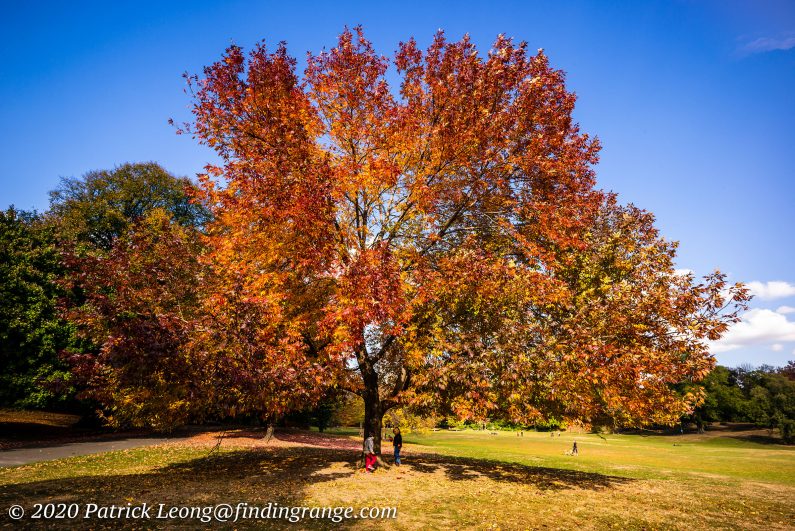
↑ This was taken with the M 240, and Super Elmar-M 18mm combo in Prospect Park. 200 ISO was used.
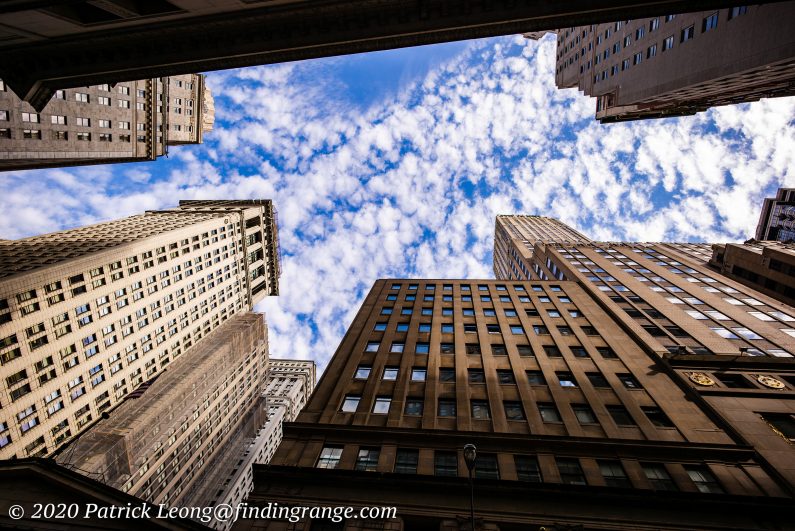
↑ Here’s a shot in Wall Street with the M 240 with 200 ISO.
As for depth of field, you’re definitely not going to get those dreamy, blurred out backgrounds with the Super Elmar-M 18mm but then again, a lens like this probably isn’t the first choice for some photographers taking close up portraits with thin depth of field, for example. For what it’s worth, the bokeh is very smooth when you do get it. I rarely use this lens wide open but there’s an example below taken with the Sigma fp.
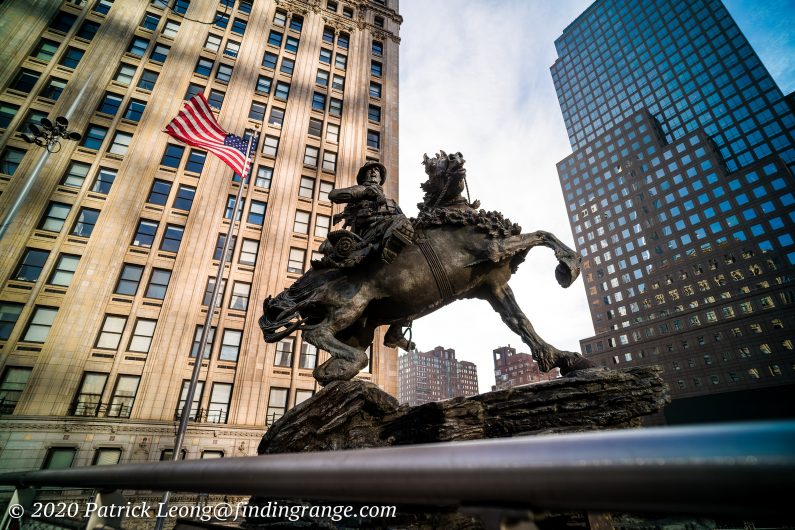
↑ This was taken with the Super Elmar-M 18mm f3.8 ASPH attached to the Sigma fp with 100 ISO. I used my M adapter from my Leica SL2.
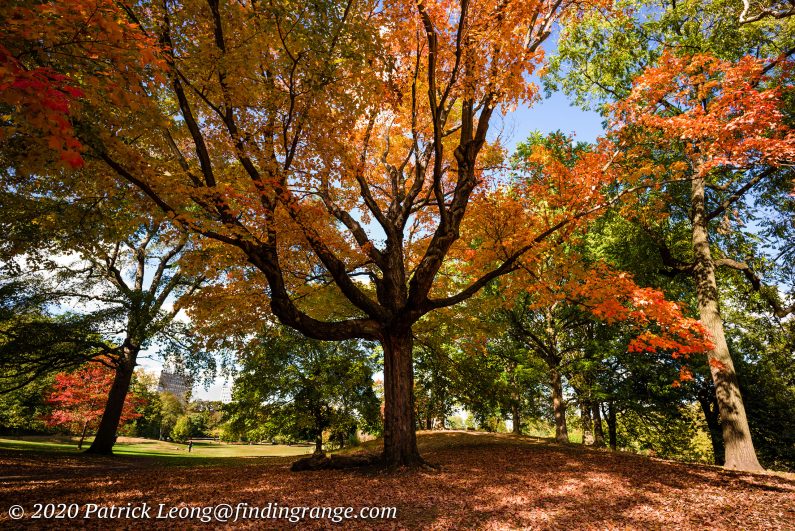
↑ This one was taken with the M 240. I used 200 ISO.
Leica Super Elmar-M 18mm f3.8 ASPH Verdict:
I’ve owned Super Elmar-M 18mm f3.8 ASPH for years, and to this day, it’s still one of my favorite lenses. Not only is the image quality truly exceptional, the lens can be fully exploited throughout its aperture range to yield superb results. It also has plenty of character.
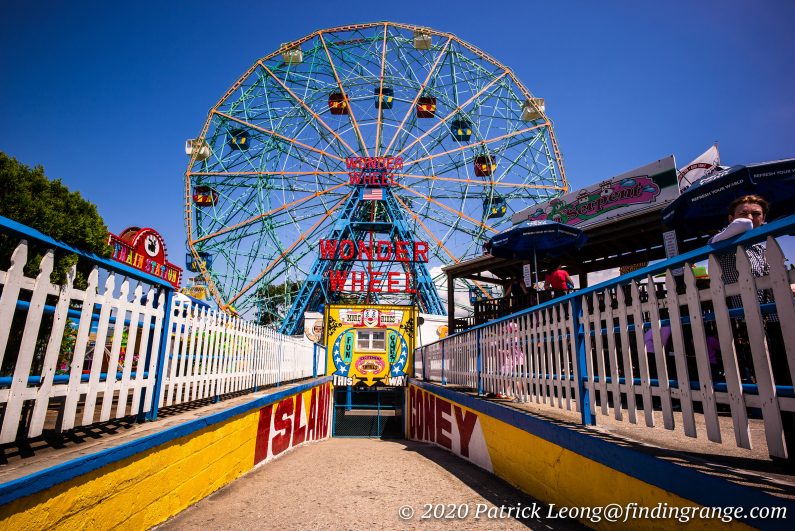
↑ This was taken in Coney Island with the M 240 with 200 ISO.
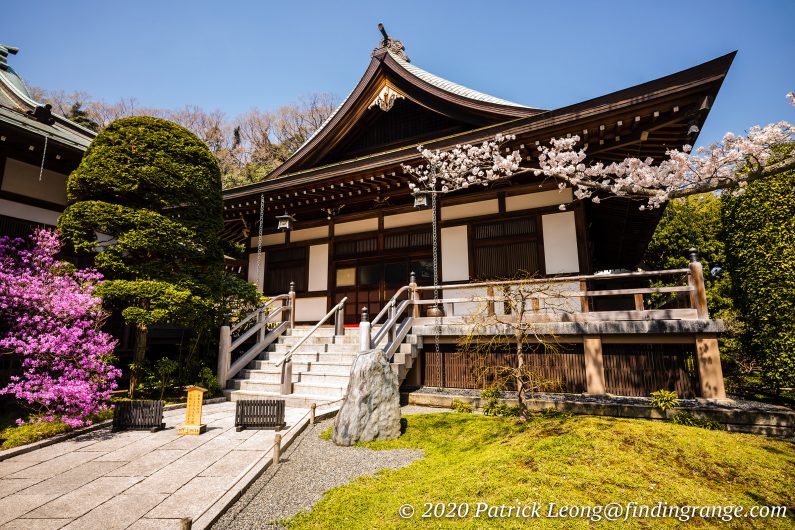
↑ Here’s a shot taken with the Leica M10 during my trip to Japan. 100 ISO was used.
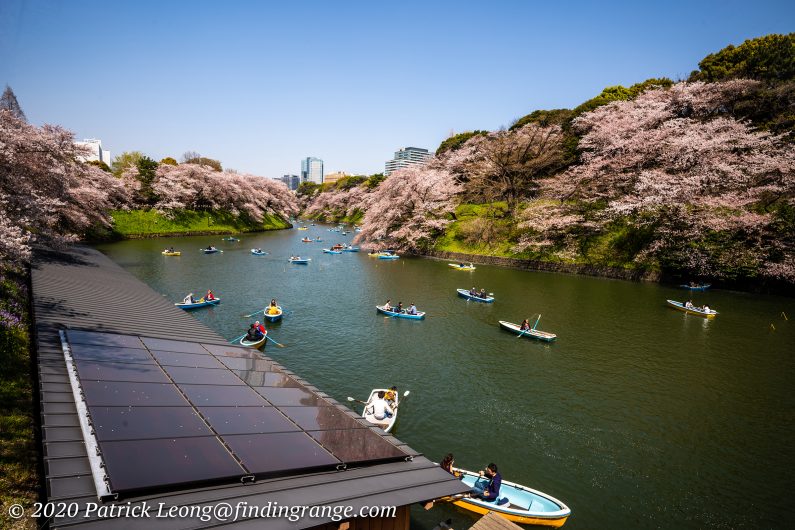
↑ This was also shot in Japan with the Leica M10 with 200 ISO. This was during cherry blossom season.
To top it off, the lens is compact, light and extremely well made making it great for all types of photography ranging from cityscape, landscape, street work, and whatever else you can think of shooting. It’s something great to bring along on trips, and vacations as well. With its superb build quality, the Super Elmar-M 18mm will never let you down.
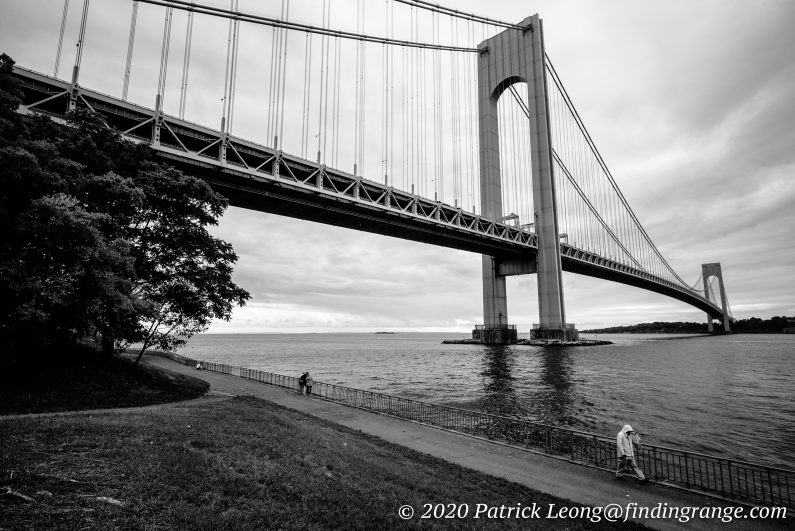
↑ This was taken with the Leica M Typ 240 with 200 ISO.
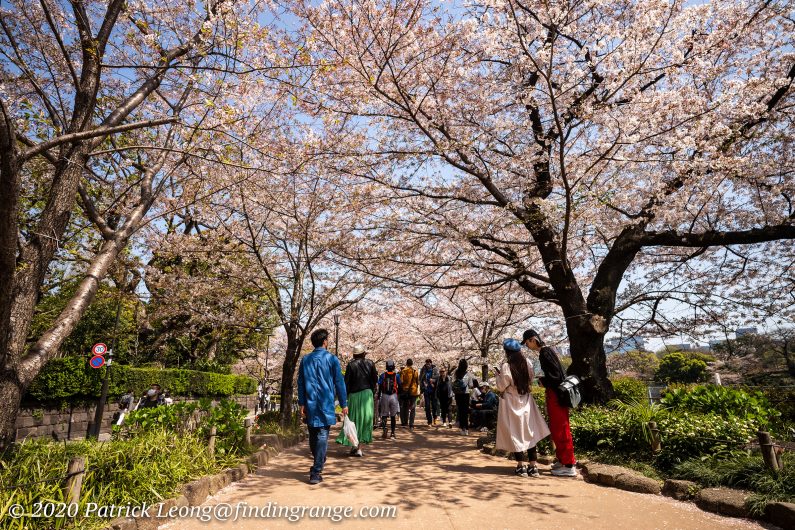
↑ Here’s one taken in Japan with the Leica M10 with 200 ISO.
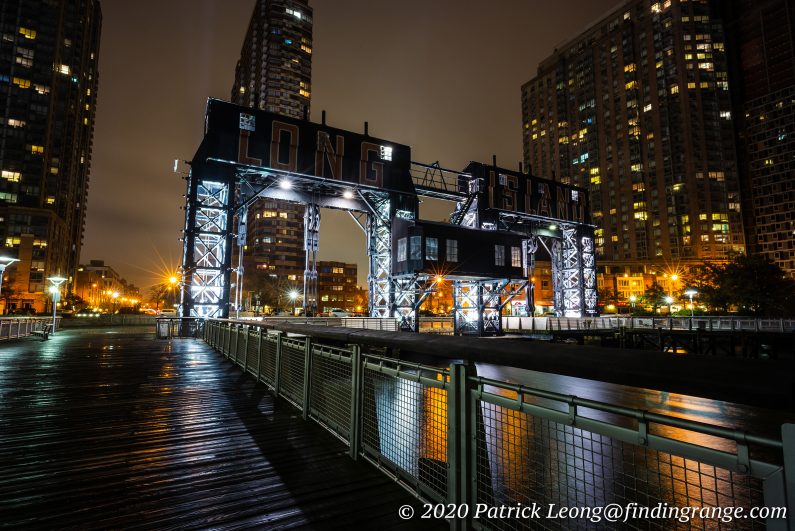
↑ This was taken late at night with the Leica M 240 with 200 ISO.
It’s also worth mentioning that the Super Elmar-M 18mm matches well, in terms of balance, with a variety of camera bodies. Having the Super Elmar-M 18mm for years allowed me to try it on multiple M bodies, the Leica CL, SL, Fuji bodies and even the Sigma fp.
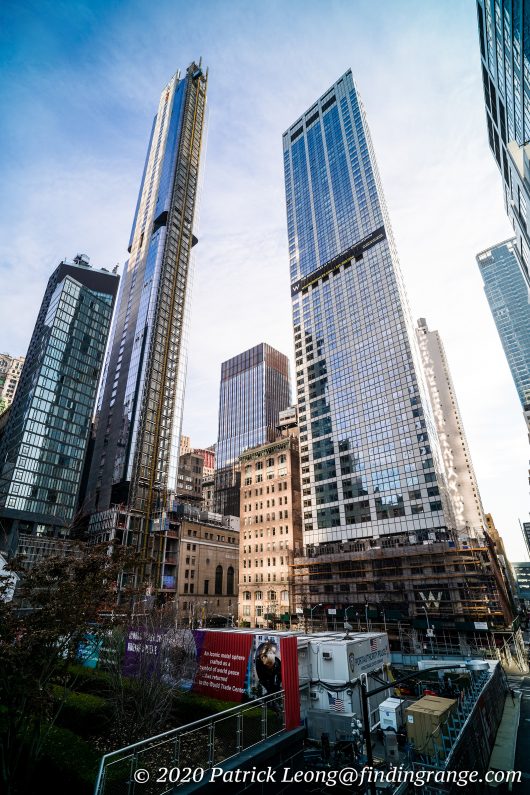
↑ Here’s a shot taken with the Sigma fp and the Super Elmar-M 18mm f3.8 ASPH. 200 ISO was used here.

↑ Here’s one taken in Harajuku with the M10. I used 400 ISO.
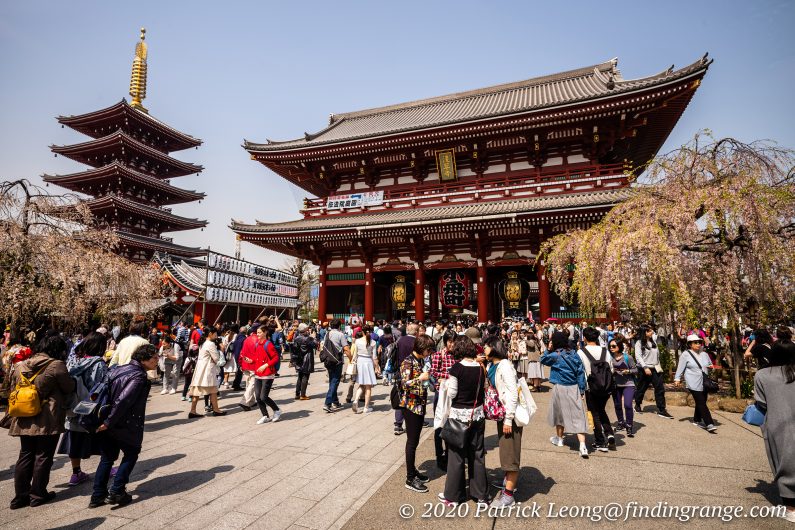
↑ Here’s another taken with the M10 with 400 ISO in Japan.
In addition to all the features and traits I mentioned above, the Super Elmar-M 18mm f3.8 ASPH is just a plain out fun lens to use. I remember shooting Leica back in the film days, and if I remember correctly, there was only the 21mm Elmarit-M f2.8. Now we have something like an 18mm, which is quite frankly, pretty awesome. Shooting with an 18mm can be quite different but once you get the hang of it, it can be addictive to use. Like I said, this was one of my most used lenses at one point, and the only reason it does not get as much use as it did before is because I do mainly boudoir and street fashion now.
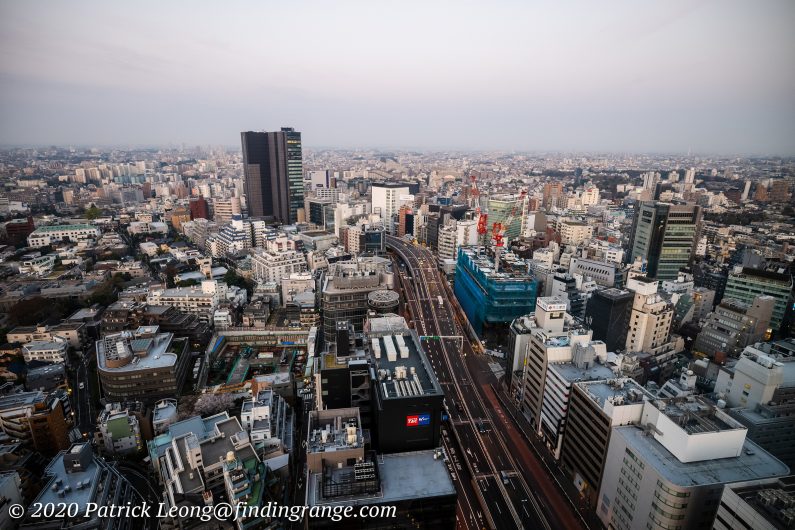
↑ This was taken from my window in my hotel room in Tokyo. Specifically, this is Shibuya. This was taken with the M10. I used 1600 ISO.

↑ Here’s one taken with the M 240 with 200 ISO in Williamsburg.
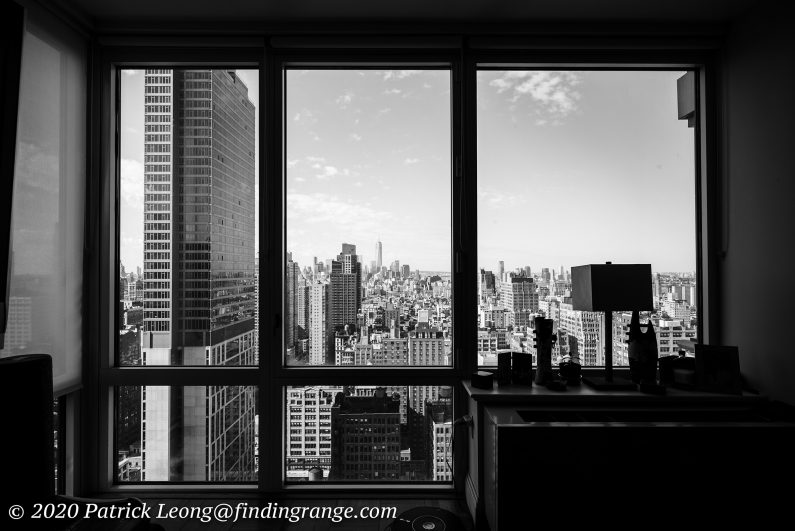
↑ This was taken from my brother in-law’s old apartment. I shot this with the M 240 with 200 ISO.
Rumor has it that Leica may be discontinuing this lens soon but bottom line is if you’ve been looking for an M mount ultra wide angle lens, this is still a top contender. I feel sometimes the Super Elmar-M 18mm is a bit overshadowed by other wide angle M lenses because of its focal length, and max aperture but this is truly a superb lens with the build, image quality and character to back it up. It continues to be one of my absolute favorites even after several years of using it, and it’s a lens I can not recommend enough.
Thanks for taking the time to read my review! If you’re considering purchasing the Super Elmar-M 18mm f3.8 ASPH, and my review helped you decide, please help support this site by purchasing from the link below or any mentioned in this review. It will not cost you anything extra. Thank you for your support!

